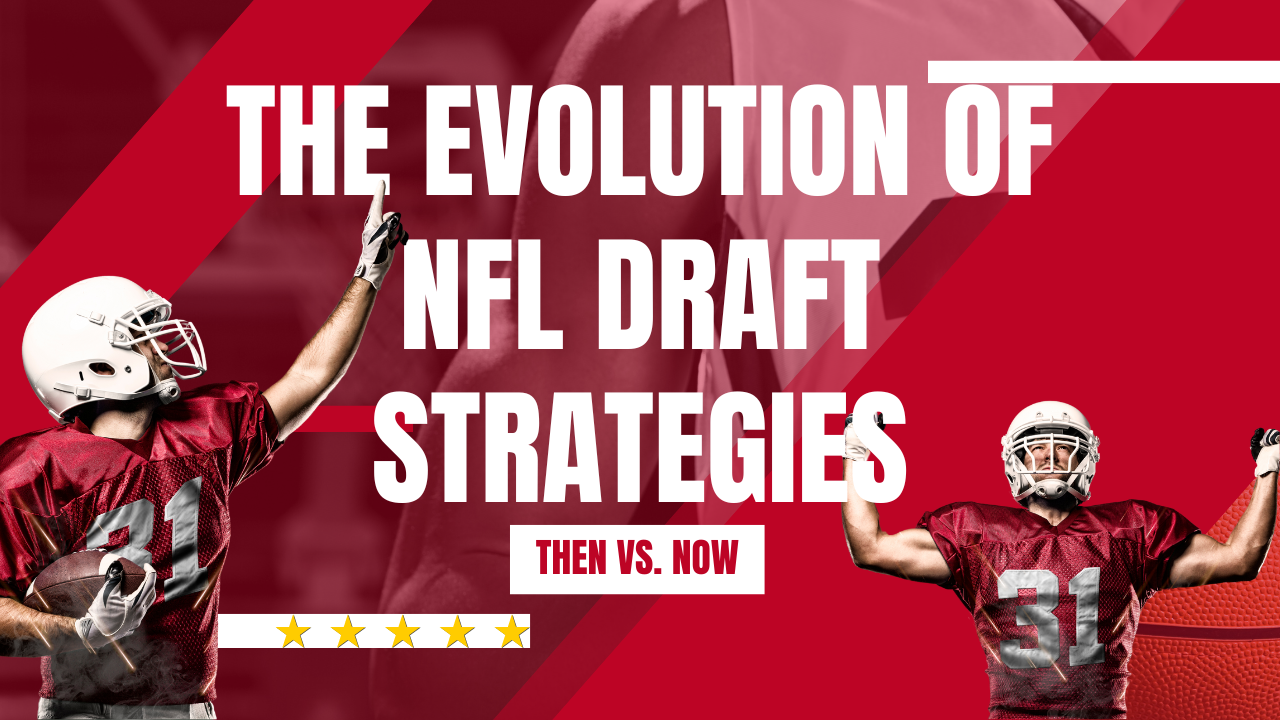The NFL Draft has been a cornerstone of professional football since its inception in 1936. For decades, it has provided teams with a means to replenish talent and build for the future. While the essence of the draft remains the same—each team selecting players from a pool of eligible college athletes—the strategies surrounding the process have evolved dramatically. From the early days of gut instincts and basic scouting to today’s data-driven decisions and psychological evaluations, the NFL Draft has undergone a remarkable transformation.
The Early Years: Drafting by Gut Feeling
When the NFL Draft began in 1936, it was a far cry from the highly publicized, multi-day event we see today. In its earliest form, the draft consisted of nine teams picking from a list of players based largely on reputation and limited scouting reports. There were no dedicated scouting departments or combined events to evaluate a player’s skills. Teams relied on what little information they could gather, often focusing on local players they had seen in action or heard about through word of mouth.
The idea of using scientific methods or advanced metrics to assess players didn’t exist. In fact, teams rarely even traveled to watch prospects in person. Coaches and general managers often relied on gut feelings, personal relationships with college coaches, and sometimes sheer luck in choosing players. The entire process was informal, with limited analysis of a player’s long-term potential or fit within a team’s system. This led to frequent misjudgments, as teams would often draft players based on size, speed, or name recognition alone, rather than comprehensive assessments.
The 1960s to 1980s: The Rise of Scouting
As the NFL grew in popularity and teams realized the importance of the draft, organizations began investing more resources into the process. The 1960s saw the rise of dedicated scouting departments, which changed the landscape of draft strategy. Teams now employed scouts to travel the country, attend college games, and gather in-depth information about potential draft picks. These scouts were tasked with evaluating players based on more detailed criteria, including their physical attributes, football IQ, and work ethic.
One of the most significant developments during this period was the introduction of the NFL Scouting Combine in 1982. The combine allowed teams to gather comprehensive data on players’ athletic abilities, medical conditions, and mental acuity, all in one location. This created a more structured and scientific approach to drafting, as teams now had access to standardized performance metrics. With the advent of the combine, teams could compare players more objectively based on their 40-yard dash times, vertical jumps, bench press numbers, and more.
By the 1970s and 1980s, draft strategies began to incorporate more analytical approaches. Teams started building profiles on players that went beyond simple physical traits. They focused more on how a player fit into their overall system and culture, looking at leadership qualities, versatility, and a player’s potential to grow. This period also saw the rise of the “best player available” strategy, where teams would prioritize drafting the most talented player on the board, regardless of positional need.
The 1990s: Data and Advanced Metrics
The 1990s marked a new era in draft strategy, as teams began to embrace advanced metrics and statistical analysis. With the explosion of data in sports, NFL front offices realized they could dig deeper into a player’s performance and make more informed decisions. Teams started using computer programs to track player stats, measure efficiency, and predict future performance based on historical data.
One of the major shifts during this time was the focus on positional value. Teams started to understand that certain positions—like quarterback, offensive tackle, and edge rusher—had more impact on a team’s success and were therefore worth a higher draft pick. This led to teams prioritizing these positions early in the draft, even if other players were more talented overall. The idea of positional scarcity also took hold, as teams would reach for a player at a position of need if they believed there was a limited pool of talent available.
The 1990s also saw a rise in psychological profiling and character evaluations. Teams started to realize that physical talent alone wasn’t enough to guarantee success in the NFL. They began using interviews and psychological tests to assess a player’s mental toughness, leadership qualities, and ability to handle the pressure of professional football. This period laid the groundwork for the comprehensive player evaluations we see today.
The Modern Era: Analytics and the Quest for Efficiency
Today’s NFL Draft strategies are more sophisticated and data-driven than ever before. Teams now have entire departments dedicated to analytics, using cutting-edge technology and statistical models to evaluate players. The rise of advanced metrics like Pro Football Focus (PFF) grades and Expected Points Added (EPA) has given teams new ways to measure a player’s on-field impact. This era is defined by the integration of both “old school” scouting methods—like in-person evaluations and interviews—and “new school” data analytics.
One of the biggest trends in modern draft strategy is the use of predictive analytics. Teams use data to project how a player will perform at the NFL level, taking into account factors like competition level, injury history, and the player’s developmental curve. Machine learning models can analyze thousands of data points from a player’s college career to predict their likelihood of success in the NFL. This shift toward analytics has also changed how teams value draft picks. Rather than viewing them as individual selections, teams often see picks as part of a larger portfolio, where the goal is to maximize overall value through trades and strategic selection.
Another key development in modern draft strategy is the emphasis on finding “market inefficiencies.” With every team having access to vast amounts of data, front offices are constantly looking for ways to gain an edge. This has led to strategies like trading down to accumulate more picks, targeting players from smaller schools who are overlooked, or drafting for specific schemes that may undervalue certain positions. Teams are also more willing to take risks on players with high upside, knowing that they can mitigate the risk through coaching and development.
Balancing Need and Value
One of the eternal debates in draft strategy is whether to draft for need or value. In the past, teams were more likely to draft based on positional need, sometimes reaching for players to fill immediate gaps on their roster. However, modern draft strategies tend to favor a balance between the two. Teams understand that while it’s important to address areas of need, reaching for a player who isn’t the best available talent can be detrimental in the long run.
The “best player available” approach remains popular, but with a twist. Teams now use data to understand how positional needs align with overall value. For example, if two players are similarly rated, but one plays a position of need, the team might lean toward that player. However, they’re less likely to reach significantly lower on their draft board just to fill a hole. This balance allows teams to build depth and sustainability, rather than focusing solely on short-term fixes.
The evolution of NFL Draft strategies from instinct-based decisions to data-driven analytics reflects the broader trend of modernization in sports. While traditional scouting remains crucial, the integration of advanced metrics, psychological evaluations, and predictive analytics has revolutionized the process. Moving forward, we can expect NFL teams to continue pushing the boundaries of innovation, using technology and data to refine their draft strategies and maintain a competitive edge. Whether through finding market inefficiencies, balancing positional value, or leveraging analytics, the future of the NFL Draft will be defined by the ongoing quest for efficiency and success.







